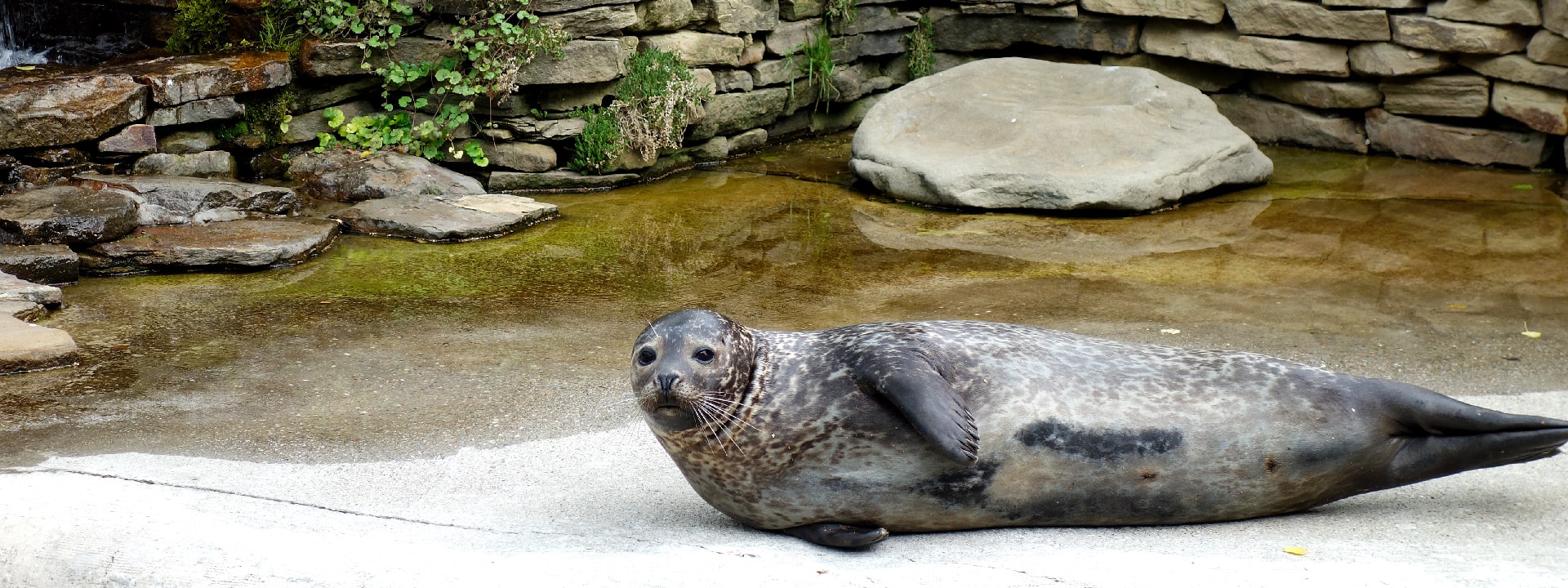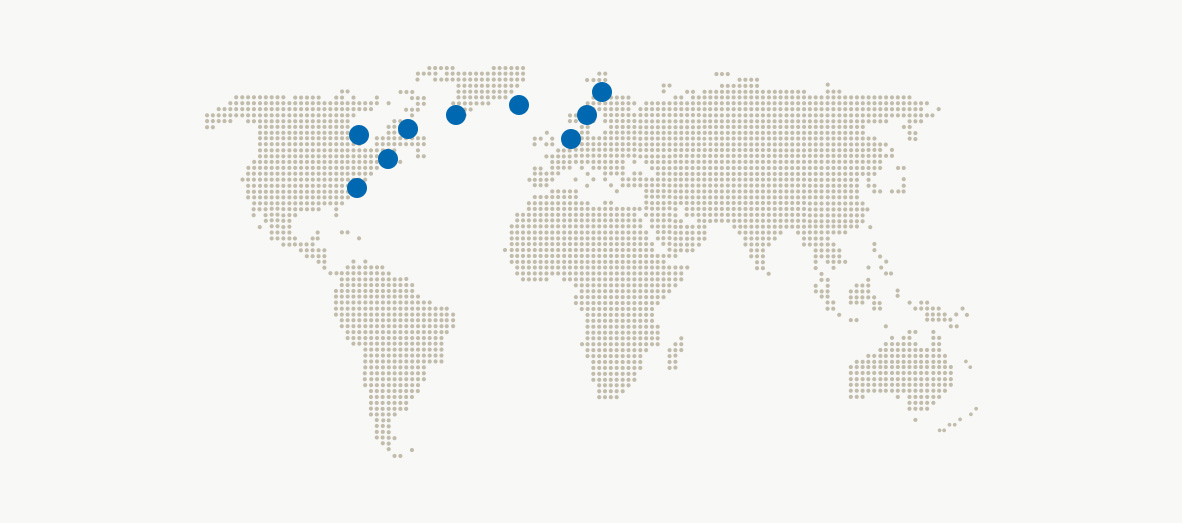
Harbour seal
Phoca vitulina
Species
P. vitulina
Order
Carnivora
Family
Phocidae
Danger of Extinction
Bajo riesgo (Preocupación menor)

Features
They have a rounded head, they lack external ear flaps and their whiskers are called vibrissae that they use to detect any movement in the water. Their mottled grey coat can be lighter or darker according to the concentration of melanocytes. Under their skin they have a thick layer of blubber that keeps them warm and gives them energy.
They are physically adapted to maximize propulsion while diving. Their flippers are webbed and they have five digits with strong claws at the ends. They use their hind flippers and their body, which they move from side-to-side, to maximise their swimming speed and agility in the water.
The male adults usually grow to a length of 1.5-1.9 m and can weigh anywhere from 60 to 160 kg, while the females grow to about 1.3-1.7 m and weigh between 50 and 105 kg. However their size also varies according to where the species lives: the seals from Alaska and the West Pacific are larger than the seals from the Atlantic and the East Pacific.
Their breeding season varies from March to September and after 10-11 months of gestation only one pup will be born, which weighs between 8 and 12 kg. After the mating season they start to moult, which is when they grow a new waterproof coat.
Customs, food and habitat:
In the sea the seals are usually solitary, although sometimes they do form groups to feed when prey abundance is high.
They are generalist feeders that feed of a wide variety of fish, cephalopods and crustaceans. They have a diversified diet, which is influenced by the seasonal changes in prey abundance. They mainly hunt on the coast, at depths of less than 100 m, however there are records of them diving as deep as 480 m in Alaska.
Harbour seals live mainly in coastal waters and they are commonly found in bays, estuaries and intertidal areas. In general, they stay close to the water for a quick escape from any threats.
Curiosities
The milk that harbour seal pups are fed contains up to 50% fat, which means that they grow quickly and they become independent at between 4 and 6 weeks old. In this way they are weaned early on, and the mother and the pup can spend less time on land at the mercy of predators.
The life span of harbour seals is approximately 30 to 35 years, although this varies between males and females, the latter tend to live much longer. The males live for about 25-30 years, while the females live for about 30-35 years.

